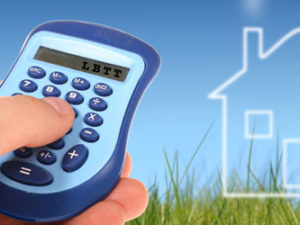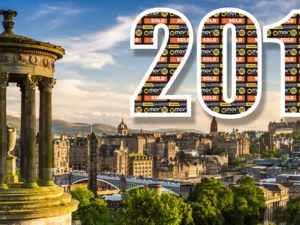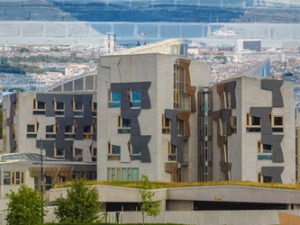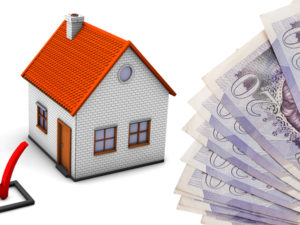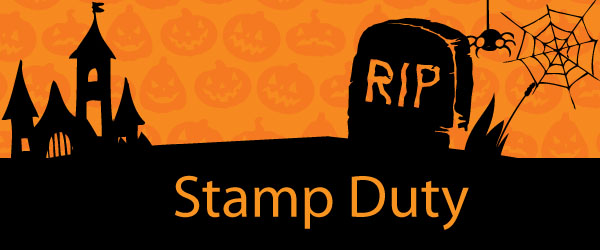
The finer details have just been announced for the Land and Buildings Transaction Tax that is due to replace Stamp Duty in April 2015. So, what are the new levels of tax on property purchases? What effect will this have on the property market? And it this an improvement on the existing system of Stamp Duty?
Stamp Duty Land Tax (‘SDLT’ or ‘Stamp Duty’) – The Current Tax Regime
As a reminder, Stamp Duty currently applies to purchases of, amongst other things, residential property. For the purposes of this article, we’ll restrict ourselves to residential property. At the moment, if you are buying a property in Scotland you will pay the government tax based on the purchase price. The current rates are:
- 0% up to £125,000;
- 1% from £125,001 to £250,000;
- 3% from £250,001 to £500,000;
- 4% from £500,001 to £1,000,000;
- 5% from £1,000,000 to £2,000,000;
- 7% from £2,000,001 upwards.
You pay SDLT on the whole amount of the purchase. In other words, if you buy a property that costs £249,999 you will pay 1% of the whole amount. If you purchase a property that costs £250,001, just £2 more, you will pay 3% of the whole amount in tax to the government. That means that you pay almost £5,000 more in tax to the government for a property that costs just £2 more!
Land and Buildings Transaction Tax (LBTT) – What is It?
The announcement by John Swinney of the SNP yesterday put meat on the bones of a plan that has already been around for a while. In fact, I first wrote about this back in 2012 when it was proposed: http://www.mov8realestate.com/2012/12/goodbye-stamp-duty-hello-snappily-titled-land-and-buildings-transaction-tax-roll-on-2015/
Back then, the finer detail of the plan hadn’t been announced. In particular, the rates of tax hadn’t been confirmed.
As John Swinney said back in 2012:
“…we are setting out an innovative approach to taxation that is much better aligned with Scots law and practices, and the principle of progressive taxation.
“…Rather than the current distortive slab approach which sees people pay too much tax and distorts the market, we will ensure that taxpayers pay an amount more proportionate to the value of their property.”
To that extent, I was all for it. However, I did also say back then:
“…The tax rates are actually yet to be announced so it’s entirely possible that, in spite of it being structurally fairer, we could actually end up paying more in Stamp Duty and then I’ll be back on my soapbox again. However, based on the fact that you’d hope our government wouldn’t want to make the purchase of land and property in Scotland significantly less financially attractive than south of the border, let’s keep our fingers crossed that this is not the case!”
That has turned out to be quite a relevant reservation on my part…more on that later.
Land and Buildings Transaction Tax (LBTT) – When Does it Come Into Force?
It comes into effect on 1 April 2015.
Will This Only Affect Purchases Agreed After April 2015?
In short, no. Whether Stamp Duty or Land and Buildings Transaction Tax applies to the purchase will depend on the ‘effective date’ of the transaction. The effective date is essentially the Date of Entry or ‘settlement date’: the date when the purchase price is paid.
If you buy a property now, but the settlement date is after 1 April 2015, the property purchase will be subject to the new tax regime.
For a full analysis of the Stamp Duty reforms, there is a detailed article on our Blog:http://www.mov8realestate.com/2015/01/changes-lbtt-rates-april/.
Why is Land and Buildings Transaction Tax Fairer than Stamp Duty?
In short, Stamp Duty is currently a ‘slab’ tax. In other words, up to £250,000 you will pay 1% Stamp Duty to the government. So if you buy a £250,000 property you will pay £2,500 in Stamp Duty. However, if you buy a £251,000 property, you will pay just over £7,500 in Stamp Duty. So for £1000 extra on the price of the property you pay £5,000 extra in Stamp Duty!
For a buyer, buying with a mortgage, a large proportion of your purchase price is being covered by the mortgage (often between 70% and 90%). However, you have to pay your Stamp Duty out of your pocket: in other words, it requires a huge chunk of cash.
So what happens if your property is a bit nicer than the one that sold last week for £249,000, right next door to yours? What’s it worth? On paper it is worth more: it’s bigger and nicer after all! However, are you actually going to get that for it when you sell? Possibly not, because a buyer is unlikely to want to pay more than £250,000. Paying £5,000 more for it than the one that sold next door is going to cost them a further £5,000 in Stamp Duty.
All of this makes properties that are priced around the Stamp Duty thresholds artificially difficult to sell for their true value. Or, put another way: it artificially pushes down the prices of properties that are genuinely worth more. It is also arguable that someone buying a property at £255,000 isn’t much richer than someone buying a property for £245,000. Yet the rate of tax for the first buyer is 3% and the rate for the first buyer is 1%.
It’s all just a bit unfair and not hugely progressive.
What Are the Rates for Land and Buildings Transaction Tax and How is it Calculated?
The headline rates are easily misunderstood and some of the headlines in newspapers have already been quite frightening.
- Up to £135,000 the rate is 0%;
- From £135,000 to £250,000, the rate is 2%;
- From £250,000 to £1,000,000 the rate is 10%;
- From £1,000,000 upwards, the rate is 12%.
WHAT? So, does that mean that if you are buying a £500,000 property, you have to pay £50,000 in tax? Well, no!
The tax rates are marginal, so you would pay 2% tax on the portion between £135,000 and £250,000, then 10% on the portion between £250,000 and £500,000.
Here are some more examples:
- A £130,000 purchase at today’s date would require a Stamp Duty payment of £1,300 (1% of £130,000). As of April 2015, the tax on that same property would be £0.
- A £136,000 property in April 2015 will be taxed at £20 (in other words, 2% of the portion over £135,000). At today’s date, the tax on that property would be £1,360 (1% of £136,000).
- On a £300,000 property, after April 2015 the tax will be £7,300 (0% up to £135,000; 2% of the £115,000 bit between £135,000 and £250,000; 10% of the £50,000 bit between £250,000 and £300,000). At the moment, Stamp Duty would be 3% of the whole purchase price: in other words, £9,000.
- On a £500,000 property, the Stamp Duty would currently be £15,000 (3% of £500,000). However, from 1 April 2015, the LBTT figure for a purchaser will be £27,300 (0% up to £135,000, 2% of the portion between £135,000 and £250,000, plus 10% of the part between £250,000 and £500,000).
- As of April 2015, someone buying a £3m home will pay £317,300. At the moment, Stamp Duty actually comes to a lower figure: £210,000.
Who Will be Better-Off as a Result of the Change?
In short, anyone who is buying a property up to around £325,000 will be better-off or no worse off, according to the Scottish finance secretary, John Swinney, who announced the rates yesterday.
According to Swinney, 5,000 purchases will no longer be taxed as a result of the first threshold where tax becomes payable rising from £125,000 to £135,000. He added that tax will also be reduced for a further 44,000 house sales up to the value of £325,000. Swinney further stated that, under the new system, 90% of taxpayers would be better or no worse off.
So, what about people who are buying properties that cost more than £325,000? In short, they will pay more tax.
The average property price in Scotland is currently around £162,000, according to the Scottish Government. The Telegraph reported it as: Middle classes face hike under new Scottish property tax. The Guardian reported it as: Scottish government unveils ‘mansion tax’ plan. Whether you feel that this change to the taxation system is fair, with 90% paying less or the same and the remainder paying more, is likely therefore to depend on your political leanings.
What Effect Will This Have on the Property Market in the Short Term?
For the ‘high end’ estate agents, selling properties that are predominantly above £500,000, I would expect that they will have a busy few months as buyers rush to take advantage of the existing Stamp Duty system where they pay less than they will from April 2015.
For properties under £125,000, there really won’t be much of a difference as they are already exempt from Stamp Duty and that won’t change from April 2015.
For properties around or above £325,000, there could be a bit of a rush by buyers to get the property bought and the transaction settled prior to 1 April 2015 too, to save some tax.
For everything else in between £125,000 and £325,000, time will tell. Buyers of these properties do stand to save some money in tax if they hang-on and the property purchase ‘settles’ after 1 April 2015. On the flip side of this, property prices are still rising, so anything you save in tax by waiting might be more than offset by the fact that you have to pay more for the property next year than if you buy it this year. Whether buyers will think in this way is another matter, so we really will just need to wait and see.
For me, personally, if I was thinking of selling a property, I would get it on the market now and I wouldn’t hang-on. That’s because I’ve run this business through a property market crash that proved one thing: you never really know what is around the corner and, if you are thinking of doing something and current conditions are favourable, you are best to act sooner rather than later. Contrary to popular belief, winter is actually a really healthy time for selling, largely because the number of people putting their property on the market drops whilst buyer demand remains high: all of the reasons why people want to move home don’t suddenly stop just because the nights are drawing in!
What Effect Will This Have on the Property Market in the Medium Term?
For a start, I don’t think many conveyancing solicitors in Scotland who act for buyers in the higher price brackets will be allowed to take a holiday in February and March 2015! I would anticipate that there will be a lot of buyers who are putting a lot of pressure on their solicitors to settle their transaction before the new regime comes into force. As a result, there will probably be quite a lot of offers for properties at the higher end of the market with very short, if not totally unreasonable, proposed Dates of Entry in early 2015 as buyers try to squeeze-in before the change-over date.
For solicitors who specialise in acting for buyers of properties between £125,000 and £300,000, I would think that they won’t be allowed a holiday in April 2015. Some of these buyers will be asking their solicitors to hold-off on the settlement date/date of entry until after the tax regime changes, to save themselves some tax.
This might cause some deadlock where a seller is selling a property to buy another, larger one. They will probably want their purchase (the larger, more expensive property) to settle before the date where the new regime comes into force so that they can take advantage of the existing Stamp Duty regime. However, their purchaser might want to wait until after the change-over so that they can take advantage of the lower tax that will be offered by the Land and Buildings Transaction Tax. In that case, it will simply come down to negotiating positions of the parties.
What Effect Will This Have on the Property Market in the Longer Term?
This depends largely on where in the country you are because the change in tax regime will have different effects at different price points.
If buyers have to pay less tax, property becomes a bit more affordable and people are more likely to buy. Increased demand tends to put upward pressure on property prices.
In the most expensive cities however, like Edinburgh and Aberdeen, a far greater proportion of properties falls into the bracket above £325,000 where the new tax regime means that buyers have to pay more tax than they currently do under the Stamp Duty (SDLT) regime.
By the standards of the average level of wealth in Scotland, anyone buying a property that costs more than £325,000 is most certainly not poor. However, they are hardly ‘fat cats’ either. Indeed, many properties are bought with mortgages of up to 90%. This means that, on a £350,000 property, the buyer might be putting down as ‘little’ as £35,000 of that price. They then pay the rest back to the lender over 25 or 30 years. The tax on that property will be £12,300 from April 2015, up from £10,500 currently. On a £500,000 property, the buyer might have put down ‘only’ £50,000 of that purchase price yet, from 1 April 2015, the tax might be a further £27,300, up from the current Stamp Duty figure of £15,000.
In the longer term, therefore, properties UP TO around £325,000 will be more affordable for buyers. Properties between £250,000 and £300,000 will be a LOT more affordable for buyers, the 3% rate of tax being removed. Properties between £125,000 and £135,000 will be considerably more affordable because there will be no tax whereas currently buyers have to pay 1% of the purchase price. Any increase in affordability is likely to create more demand, even if that is relatively small, and this will be good for sellers of properties in these categories.
What remains to be seen is whether properties above £325,000 become increasingly less attractive to buyers the higher you go up the price scale because of the huge increase in the amount of tax that a buyer has to pay up-front in addition to their deposit, compared with the current Stamp Duty regime. That effect will not be too pronounced for properties around £400,000 because the amount of tax payable isn’t tens of thousands of pounds more. However, when you start approaching the £1,000,000 bracket, the effect could be quite acute.
So, Is Land and Buildings Transaction Tax Better than Stamp Duty?
In a word…yes. Why?
It is more progressive. It gets rid of the ‘bunching’ effect on property prices of a ridiculous ‘slab’ tax, particularly for properties that should be worth, for example, £130,000, £260,000 or £510,000: in other words, properties that are just over the current tax thresholds and which cannot achieve their property market value because of the large jumps in taxation around those price points.
Do I Think Land and Buildings Transaction Tax is a Good Thing?
In a word…no.
Why?
First…I plain-old hate Stamp Duty as being disproportionate to the wealth of the people paying it. Therefore I hate its replacement!
People who pay it have already been taxed on their income. They want to then spend that income on buying a roof to put over their heads rather than renting from a landlord. By contrast, you don’t pay tax on the rent that you pay to a landlord. So, to some extent, you could get to the point where renting becomes more attractive than home ownership which is something that we are taught, rightly or wrongly, that we ought to aspire to.
It is meant to take money out of the pockets of ‘fat cats’ and give to those in need. However, most people who buy a property, even a really expensive one, don’t actually really own the whole house. What do I mean? Well, most people put down a small proportion of the purchase price and take a huge loan to allow them to buy the house. They then spend the next 30 years paying more than double the amount that they borrowed back to the lender. Many of these buyers have saved for years to get a deposit large enough to get a mortgage to buy that home. Granted, they are wealthy, in comparison to the average person in Scotland. However, they aren’t ‘fat cats’ by any means and many will have lived well within their means for years to allow them to save that money. They are therefore, in effect, buying a home for £50,000 and taking a humungous and expensive loan for the rest of it. What they own is not, really, a huge house but rather a huge debt and the risk of being repossessed if their income drops. Having chosen to put yourself in that position, to have to pay £27,300 to the government just seems absolutely ridiculous.
In cities like Edinburgh or Aberdeen, prices are so high that a home large enough for two adults and two children with a bedroom each won’t leave you much change out of £400,000 unless you go some way out of the city. Of course, cynics would say that people who live in Edinburgh and Aberdeen, for example, have a choice. But if we accept that the country needs the major cities and therefore needs people to work there and populate them, someone has to live there…if they all moved somewhere else, somewhere else would become the new Edinburgh or Aberdeen!
Second…It could have a negative effect at the upper end of the property market. We don’t do a huge amount of work at that end of the market, so from a selfish point of view it doesn’t have a big impact on our business. However, these things always have a bit of a ripple effect through the whole market. I think that there is a danger that, in the short-to-medium term post-April 2015, there could be a significant drop in demand for properties at the high end of the market because of the significantly larger amount of tax that buyers will have to pay. This could only put downward pressure on prices at that end of the market. Whilst it’s easy to say that this only affects the ‘fat cats’, the reality is that if nobody buys that house, no tax gets paid, and that tax is meant to be redistributing the wealth away from those people: so it all becomes slightly self-defeating. And if prices fall, less tax is paid because the tax is a percentage of the purchase price.
Conclusion
I don’t think that, for the vast majority of the property market in Scotland, these changes will have a negative effect. In fact, I think that there is a chance that, after a bit of to-ing and fro-ing in the weeks leading up to the change of tax regimes, it could have quite a positive effect in the sub-£325,000 market.
However, I do have concerns about the effect on the ‘upper’ end of the market and think that, after a flurry of activity at that end of the market in the next few months, these changes can only have a negative effect on demand, and therefore prices, at the upper end of the market as such properties become less affordable almost overnight.
2 Comments
-
I have inherited 4 properties from my late mother (split between 3 sons), I did these up with my son and they were sold over the last 3 years. A third of the proceeds has been split between myself, my son, his girlfriend and my daughter. We are thinking of buying flats together now, doing up and then selling. Does this reduce the lbtt tax so that we wouldn’t pay anything if we stuck to £40000 each (two of us have a property already)?
Thanks-
Author
Thank you for your question George. The LBTT due will be based on the total purchase price paid. However, with regards any Additional Dwelling Supplement (ADS) that may apply, that will depend on the individual’s circumstances. For more about Additional Dwelling Supplement, have a look here: https://www.mov8realestate.com/2017/01/guide-lbtt-additional-dwelling-supplement-ads/. Hope that helps!
-



